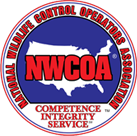RACOONS
Common Concerns & Safety Issues
Cause damage to homes, persistence to gain entrance, and potentially rabid.
Although cute, these masked bandits are a reservoir for rabies
Customers & Locations
Parks
Athletic Fields
Golf Courses
Lake Front Properties
Private Communities
Industrial Sites
Athletic Fields
Golf Courses
Lake Front Properties
Private Communities
Industrial Sites
Business Parks
Townships
County Governments
Boroughs
Schools
Municipalities
Townships
County Governments
Boroughs
Schools
Municipalities
Professional Solutions
- Remove tempting food sources
- Population control
- Amonia in garbage cans
- Limbing nearby trees or shrubs
Understanding the
RACOON
| Grouping | Omnivore |
| Nicknames | Ring-tailed Bandit, Trashed Panda, Masked Bandit, Coon, Night Raider, @#$%^&*! |
| Best Known For | Raiding human habitat and dwelling in chimneys, attics, and outbuildings. Racoons are excellent climbers and swimmers. |
| Life Span | 3 to 5 years. |
| Mating Season | January and February but can mate through June. |
| Reproductive Details | After a 63 day gestation period one litter with 3 to 5 pups is born. |
| Habitat | Possible dwellings include attics, chimneys, abandoned buildings, sheds, or barns. They also live in hollow trees, log piles, old ground hog dens, bush piles, and hay mow in barns. |
| Activity Cycle | Nocturnal, but not uncommon to be seen out on overcast days. They are not hibernators but will become dormant during harsh winter periods and may lose up to ½ of their body weight over the winter. |
| Food | Their appetite is seasonally dependent. They eat just about everything including dog and cat food, birdseed, many fruits, carrion, fish, eggs, fresh water mussels, crayfish, campsite foodstuffs, lawn grubs, sweet and field corn. They will kill and eat chickens and ducks, often removing the heads and eating the digestive crop region of the neck. |
| Damage Signs | Signs include claw and scratch marks in climbing area where entrance was gained or access to a toilet site. Damage at entry points, knocked over containers, or stripped sweet corn fecal matter accumulations at territorial toilet site locations (the family outhouse). Trampled attic insulation from nesting and young rearing. Staining and odor from urine and fecal matter. Lawn damage includes rolled up sections of sod as if a rototiller was used. Distinct poultry kills as discussed in the food section above. |
| Treatment | Trap and remove problem animals, exclude from structures and remove tempting food sources. Noise or odor deterrents have little or no lasting effect. |
| Distinguishing Features | Raccoons have distinctive markings including a ringtail and facial coloration, resembling a mask. Verbalizations are quite common including screams, purring, whimpers, and high pitch growls. |
| Risk and Disease | Raccoon round worm is found in the feces and is only destroyed by fire. Great care should be taken when cleaning up feces and toilet sites in attics. Feces and toilet sites in chimneys should only be cleaned by professionals! Rabies transmission is through bites, scratches and contact with saliva and can also be transmitted to pets and other wild animals via shared outside pet food dishes by swapping spit. Leptospirosis transmitted from raccoon urine deposits in feed hay. |


Integrated Wildlife Management is our comprehensive and effective one-stop solution. This approach brings together the six necessary elements to successfully resolve wildlife / human conflicts and when possible, safely relocate wildlife to a more suitable habitat.


